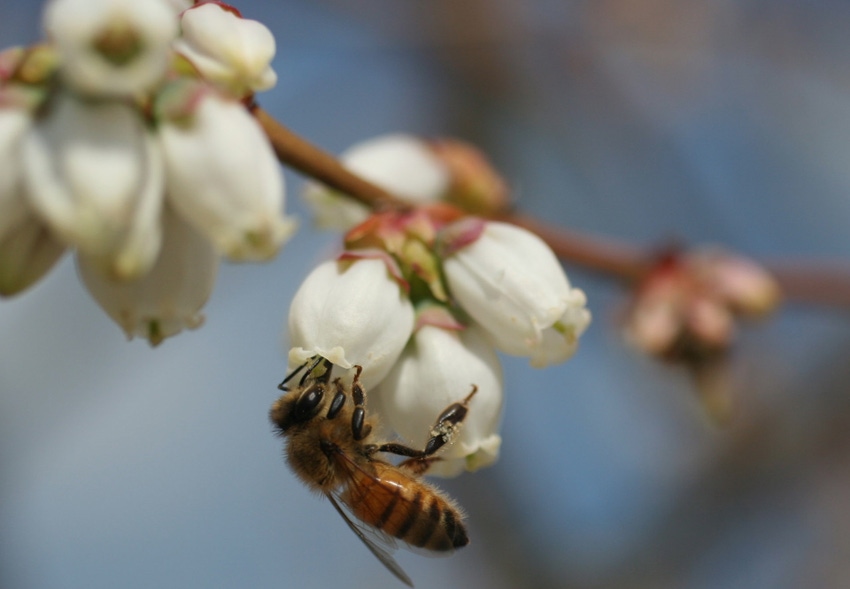
EPA regs change on-farm insecticide spraying
New regulations apply to foliar applications only, not to seed or in-furrow applications with a focus on food crops, among others.In a nutshell, products containing neonicotinoid insecticides cannot be applied when bees are foraging in that crop, or if the crop is flowering.
March 26, 2014

New regulations recently released by the Environmental Protection Agency are aimed at minimizing the exposure of pollinators to neonicotinoid insecticides.
These regulations apply to foliar applications, only, not to seed or in-furrow applications with a focus on food crops, among others. In a nutshell, products containing neonicotinoid insecticides cannot be applied when bees are foraging in that crop, or if the crop is flowering.
But there are three exceptions:
If applications are made at night, between sunset and sunrise.
If applications are made when temperatures are below 55 degrees F.
If the application is made due to an imminent threat of significant crop loss, and a documented determination consistent with an IPM plan or predetermined economic threshold is met.
Two of the exceptions won’t be much help in the Southeast. Nighttime application is not going to be practical for most growers, and application at temperatures below 55 degrees F. will seldom be an option during most of the growing season in the southeast.
That leaves only the option of imminent threat. Economic thresholds are available for many insect pest species. Growers, crop advisors and consultants are encouraged to use these thresholds or some practically adjusted alternative.
Without a doubt, these new regulations are going to “up the game.”
Going forward, the new label restrictions for foliar use of neonicotinoid insecticides appear to rule out applications for “plant health” reasons or automatic tank mixes with other products for “insurance” or “convenience” or neonicotinoid co-pacs—unless pollinators are not foraging, plants are not blooming, or a pest threshold has been determined and documented.
Some questions remain to be answered. What about insect pests where thresholds are not clearly defined? Or, who is responsible or approved to document that a threshold was met? Who keeps those records and in what format?
It will be up to individual state Departments of Agriculture to determine how their agency will react in terms of exact interpretation and enforcement.
Currently, many neonicotinoid insecticides are labeled for use on crops, some as single active ingredient products and some as co-pacs with other active ingredients.
The five most common active neonicotinoid ingredients are imidacloprid, thiamethoxam, clothianidin, acetamiprid, and dinotefuran. Products include:
Belay (clothianidin)
Venom (dinotefuran)
Admire Pro, Provado, Trimax Pro (imidacloprid)
Brigadier, Tempest (imidacloprid + bifenthrin)
Leverage (imidacloprid + beta-cyfluthrin)
Centric, Actara (thiamethoxam)
Endigo (thiamethoxam + lambda-cyhalothrin)
Assail (acetamiprid)
Justice (acetamiprid + bifenthrin)
In the future, use of these products (and there may be others not listed) will require more stewardship, more pest level documentation, and more record-keeping. It will be a challenge but also an opportunity.
These new regulations could result in more growers utilizing scouts, crop advisors or independent crop consultants to determine if and when pest thresholds are met and encourage the development of guidelines for documentation.
For now, another easy solution would be to switch to a product other than one containing a neonicotinoid, like a pyrethroid or organophosphate. Many of these are equally effective or even more effective, depending on the pest.
Whatever the choice, the game is changing. We must figure out the best ways to adapt.
You May Also Like



